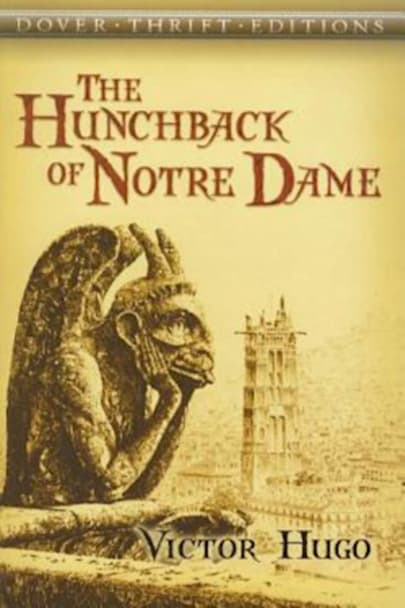A mad priest, a vagabond playwright, a social-climbing soldier, and a deformed bell-ringer–all are captivated by a gypsy girl’s beauty and charm. Two of them will betray her, but the others will remain loyal, even in the shadow of the gallows. These outlaws find sanctuary within the walls of medieval Paris’ greatest monument, the grand Cathedral of Notre Dame. “What a beautiful thing … “Notre-Dame” is!” declared Gustave Flaubert of Victor Hugo’s 1837 novel. Originally published as “Notre-Dame de Paris” (Our Lady of Paris), it was conceived as a story of the cathedral itself, which functioned as the passionate heart of fifteenth-century city life. But Hugo’s human drama rivals the Gothic masterpiece for dominance. Drawn with humor and compassion, his characters endure, both in literary history and in readers’ imaginations: Frollo, the sinister archdeacon; Quasimodo, the hideous hunchback; and the enchanting outcast, Esmeralda.
more



Some books are insulted when rated the same as thousands of other books, even at maximum on the scale, despite every one of those thousands totally meriting their own maximum ratings.
Some books demand a separate yardstick, and there are many such books.
This is one.
The story needs no recounting. It is a well known classic.
Heart-wrenching. Tear jerking. Whatever.
It fully deserves its place in the collective human consciousness because it is a complex story line, so relentlessly delivered that it qualifies as a hard read.
More than 5 stars.
I had this book on my shelf for more than thirty years, intending to read it some day, and never got around to it until one day in early April when my eye lit on it and it just suddenly seemed like it was time. And then about a week after I started it, the cathedral burned. So obviously, like the butterfly wing in chaos theory, my taking it down off the shelf caused the fire…
Or maybe it was just a coincidence. Star ratings are of course irrelevant to classics like this; my three stars are an attempt to express that it was a great reading experience but had its irritating aspects.
To start with, this has to be the most shamelessly padded book in literary history. Moby Dick with all that stuff about whaling is a model of concise storytelling compared to this massive data dump. Writers are warned about the temptation to jam all their research into a book; Victor Hugo obviously never got that memo. What story there is in this novel proceeds by fits and starts, grinding to a halt every few pages for one of Hugo’s interminable disquisitions on history, architecture, philology, alchemy and other arcana. He simply cannot resist showing off. The most trivial event can serve as a pretext for an irrelevant aside, along the lines of “The first of March had arrived. The sun, which Dubartas, that classic ancestor of periphrase, had not yet dubbed the “Grand-duke of Candles,” was none the less radiant and joyous on that account.”
The story, when it can be discerned in this morass of erudition, is familiar to us from movie adaptations or Classic Comics: the hideously deformed Quasimodo, the bell-ringer of Notre Dame cathedral, is slavishly devoted to the hideously repressed archdeacon Claude Frollo, who rescued him as an abandoned infant. The beautiful and innocent Gypsy girl Esmeralda takes pity on Quasimodo when he is being unjustly flogged and gives him water; now Quasimodo and Frollo are rivals for her affection, Quasimodo with a pure and simple devotion and the severely celibate Frollo with a highly impure obsession. For her part Esmeralda is in love with the handsome and empty-headed Phoebus, a soldier. When Esmeralda is accused of witchcraft she takes refuge in the cathedral, where Quasimodo has to protect her from the mob outside and the twisted priest within… It doesn’t end well.
In fact, the book is pretty much a downer all around. The harsh cruelty of medieval society is sharply depicted, with all its superstition, hysteria, obscurantism and injustice. The denouement (spoiler alert) involves an eye-rolling coincidence which Hugo uses to raise our hopes of a happy ending, only to let us down with a crash. Thanks, Vic. I think I’ll just go shoot myself.
So why read it? Well, it’s fun sometimes to lose yourself for a few weeks in a big massive classic like this; take it a few pages at a time and enjoy the language, enjoy the erudition if you’re a history or architecture buff. Stripped of its pretentious irrelevancies, the story is an endorsement of the Enlightenment and a protest against medieval repression and superstition. Hugo could have used an editor, but if you’re willing to take your time and wade through his meandering observations, you will find things to like. Otherwise, stick to the Charles Laughton flick or the Disney animated feature.